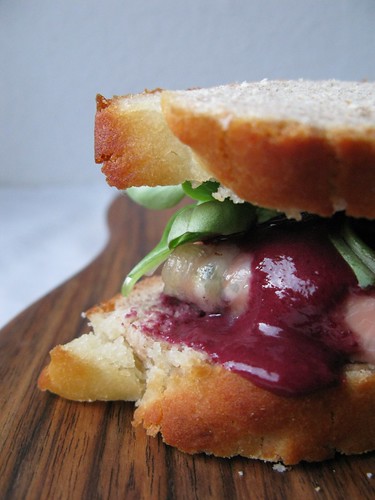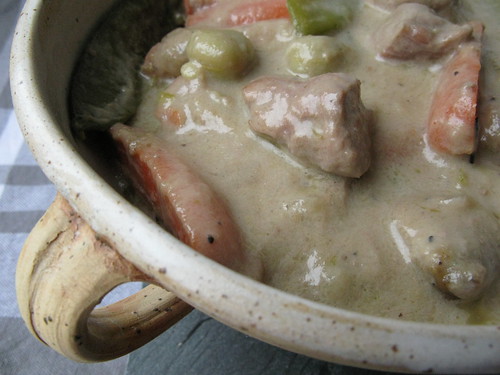Sara and Erica of Baking JDs were our March 2012 Daring Baker hostesses! Sara & Erica challenged us to make Dutch Crunch bread, a delicious sandwich bread with a unique, crunchy topping. Sara and Erica also challenged us to create a one of a kind sandwich with our bread!
Sara grew up in the Bay Area, but was dismayed when she moved away for college that Dutch Crunch bread is not usually available outside of Northern California. For many folks from the Bay Area, a sandwich just isn’t complete without Dutch Crunch bread. Technically, Dutch Crunch doesn’t refer to the type of bread, but rather the topping that is spread over the bread before baking. In Dutch it’s called Tijgerbrood or “tiger bread” after the tiger-like shell on the bread when it comes out of the oven. The final product has a delightful sweet crunch to it that makes it perfect for a sandwich roll. It’s a common option at sandwich shops all over the Bay Area and is often one of the first breads to run out.
As I am in my 'bread-baking-mode' the last weeks, this was a great challenge for me. I used the opportunity and made a braided loaf with the dough - which you can't unfortunately see because of the topping (but it was a good exercise nevertheless). The bread was very versatile - I used it for sweet and savoury dishes and it stayed fresh for a very long time - even after 5 days it tasted like day one with the little help from a toaster. Just keep an eye on the topping when it's resting - because of the large amount of yeast it rises really quick and much, so you should use a large bowl to prevent dough disasters - just catched mine in time before it could ran over ...
The bigger slices were used to make the sanwiches and the smaller ones were used in a bread and butter pudding with raspberries like this one, I served it with vanilla sauce. Yummy! For the sandwich 'construction' I decided for warm ingredients. I love warm stuff for breakfast, especially fried eggs and goat cream cheese wrapped in bacon or ham. So why don't put that onto this crunchy bread? A fabulous treat I took to work for lunch (and which saved the day).
 |
| Sandwich of Dutch Crunch Bread with goat cream cheese in smoked ham, lamb's lettuce and blueberry-dressing |
 |
| Sandwich of Dutch Crunch Bread with fried egg & shrimps, tomatoes and iceberg lettuce |

